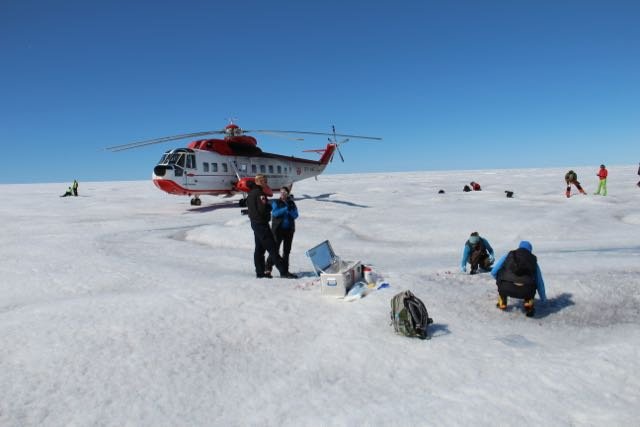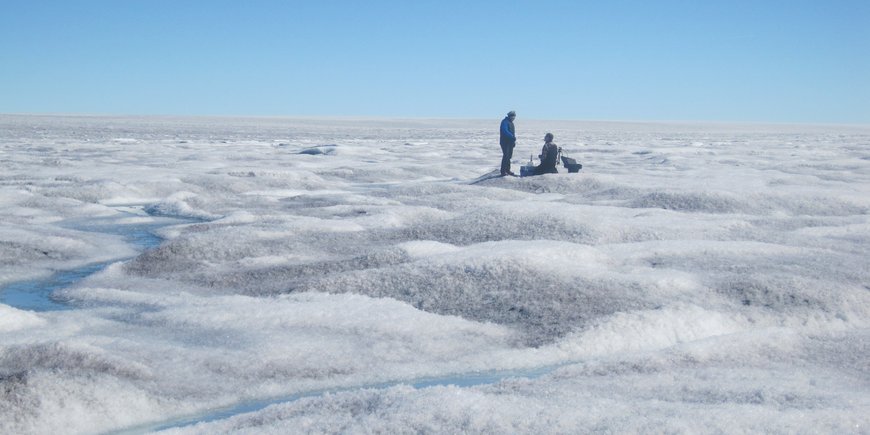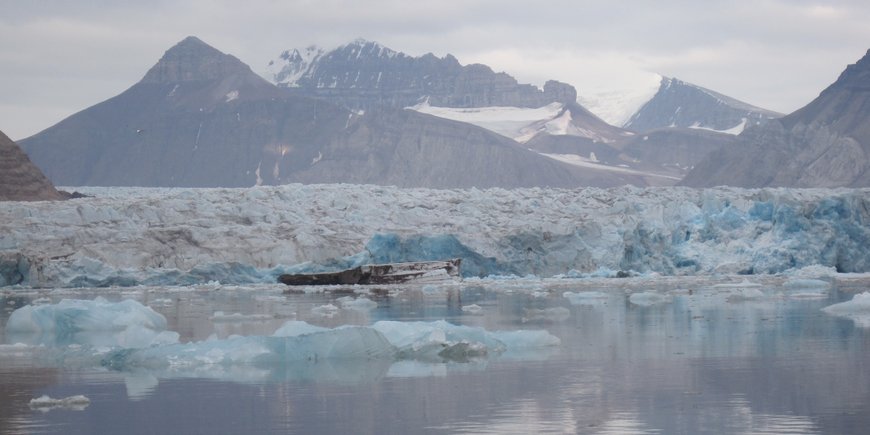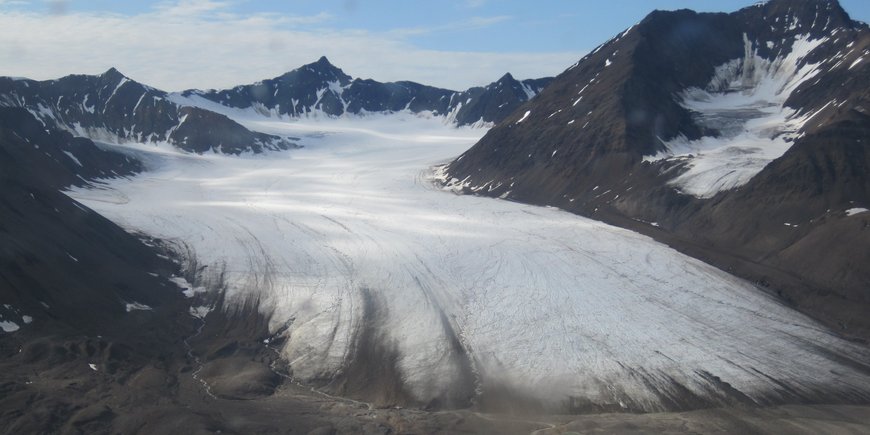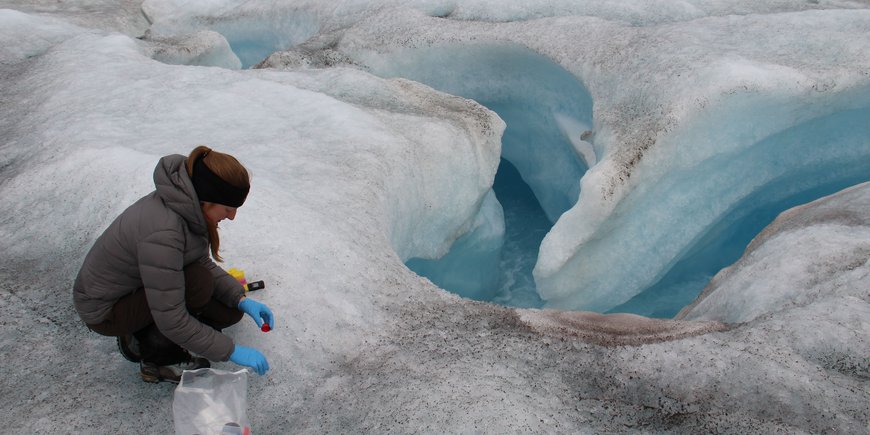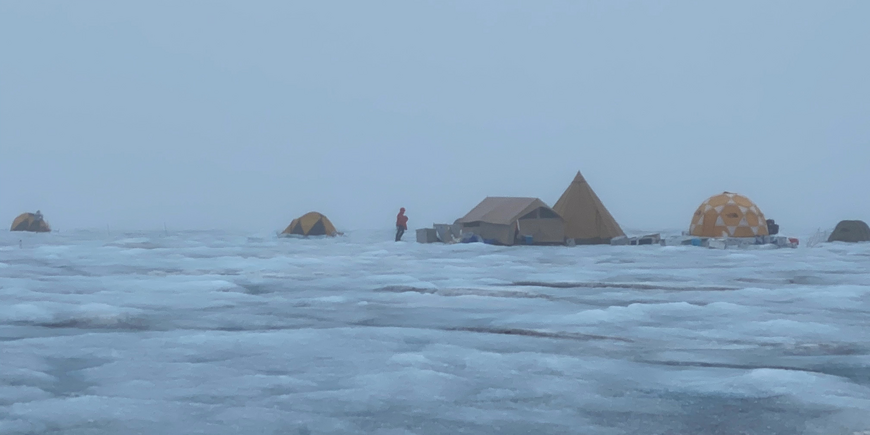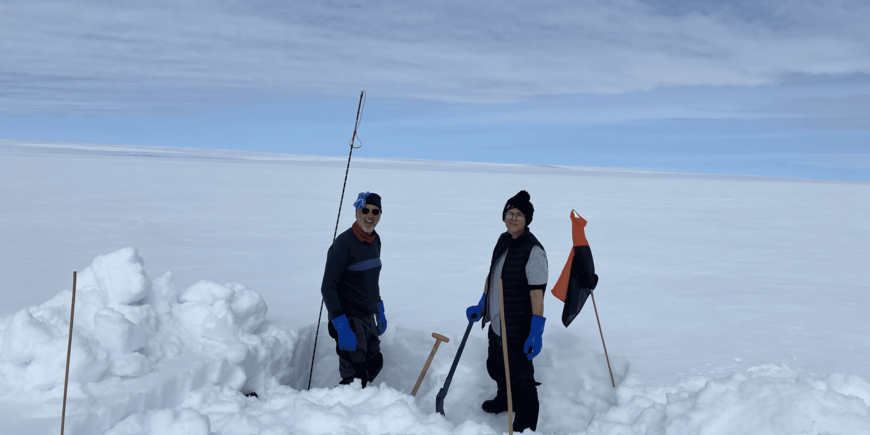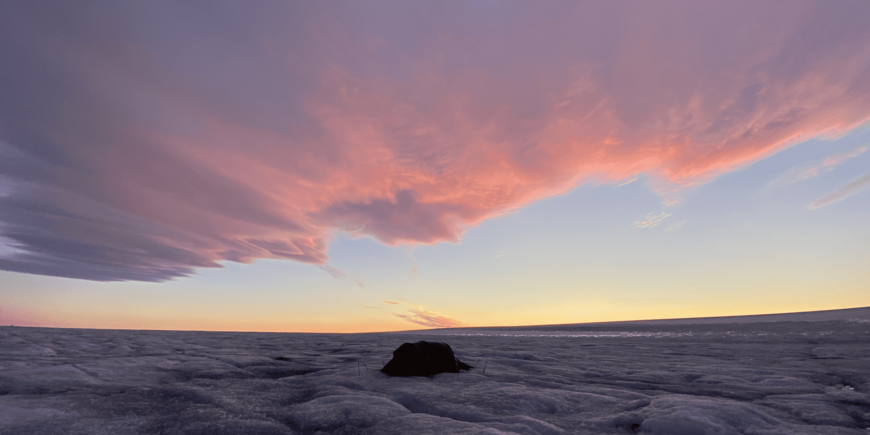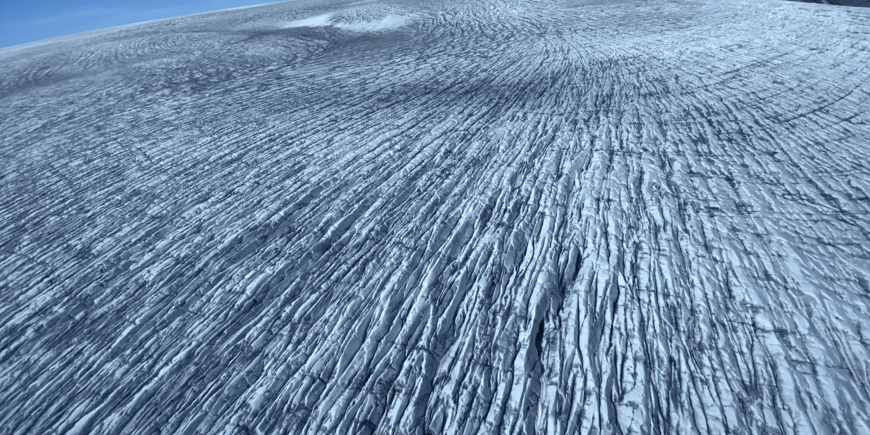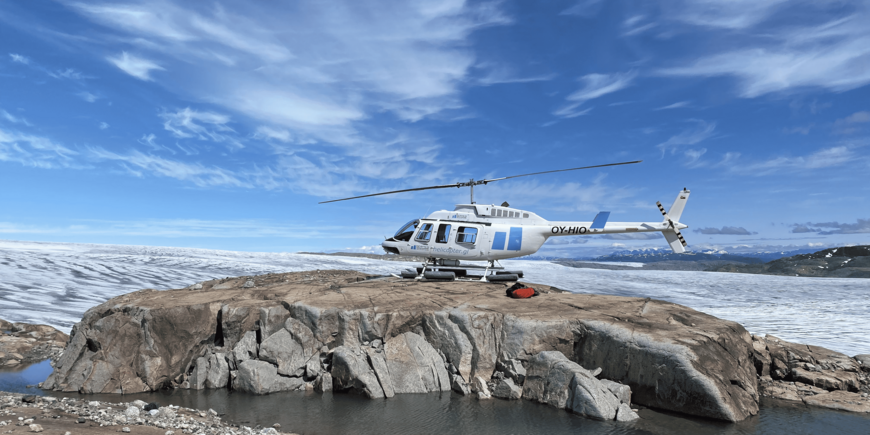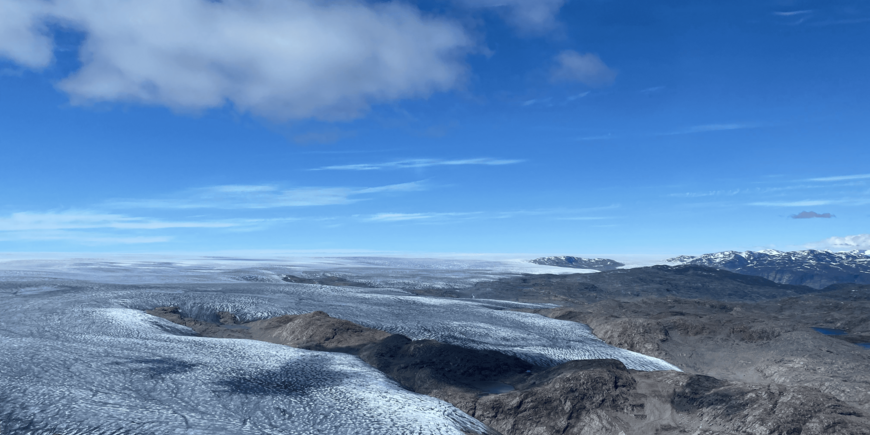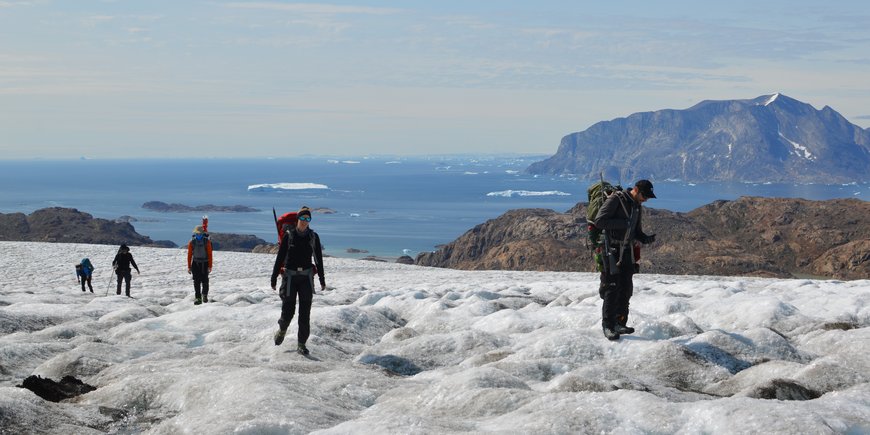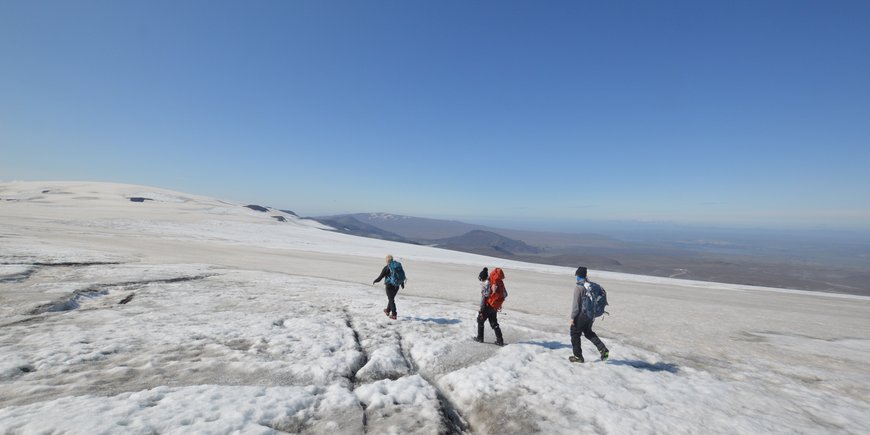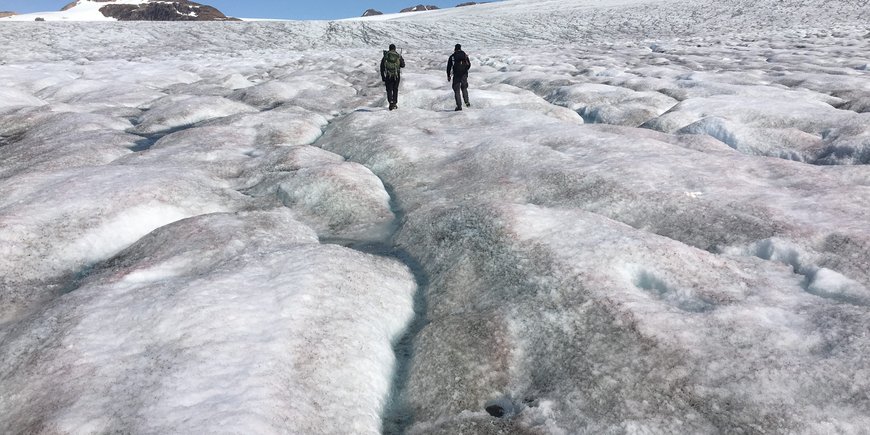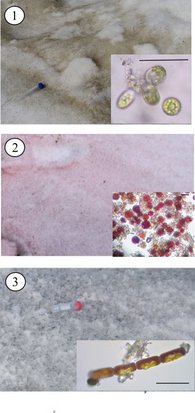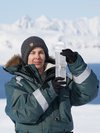Microbial ‘Omics’ Focusing on Biodiversity and Physiology of Bacteria and Micro-eukaryotes
The main primary producers on snow and ice surfaces are snow and ice algae, respectively. They are poly-extremophilic microalgae, which have evolved a range of adaptations to low temperature environments including the freezing of water, desiccation, nutrient deficiencies, and high light irradiation. In order to protect their photosystematic apparatus from photoinhibition, they produce a range of pigments, which cause distinct colourations of the snow and ice (e.g., green, red, brown, black). Together with other impurities (e.g., dust, minerals, black carbon), these algal-derived pigments cause a darkening of the snow and ice surfaces, which in turn decreases albedo and increases melt rates in glacial ecosystems.
Yet, the biogeographic distribution patterns, their biodiversity and the biochemical strategies are still poorly understood. In order to get a better understanding, we are evaluating snow and ice algal communities, and their associated microbiome (i.e., bacteria, archaea, fungi), in various Arctic and Alpine settings by using a multi-disciplinary approach. We are working to reveal community compositions and dynamics by using next generation sequencing technologies including targeted marker gene, shotgun metagenome, and RNA sequencing. The molecular data are then cross-correlated with the physico-chemical (e.g., pH) and geochemical (e.g., nutrients, trace metals) boundary conditions to paint a more complete picture of microbial ecosystem dynamics. Additionally, we are implementing a metabolomics approach to understand how microbial metabolisms can adapt, change, and respond to changing environmental conditions.
This work is carried out in collaboration with the cryo-micro team led by Alex Anesio at Aarhus University Roskilde.
Recent Publications
(authors from the group in bold)
Lutz, S., Procházková, L., Benning, L. G., Nedbalová, L., Remias, D. (2019): Evaluating amplicon high–throughput sequencing data of microalgae living in melting snow: improvements and limitations. - Fottea, 19, 2, 115-131. DOI: 10.5507/fot.2019.003.
Lutz, S., Ziolkowski, L., Benning, L. G. (2019): The Biodiversity and Geochemistry of Cryoconite Holes in Queen Maud Land, East Antarctica. - Microorganisms, 7, 6, 160. DOI: 10.3390/microorganisms7060160.
Lutz, S., McCutcheon, J., McQuaid, J. B., Benning, L. G. (2018): The diversity of ice algal communities on the Greenland Ice Sheet as revealed by oligotyping. - Microbial Genomics, 4. DOI: 10.1099/mgen.0.000159.
Anesio, A. M., Lutz, S., Chrismas, N. A. M., Benning, L. G. (2017): The microbiome of glaciers and ice sheets. - npj Biofilms and Microbiomes, 3, 10. DOI: 10.1038/s41522-017-0019-0.



